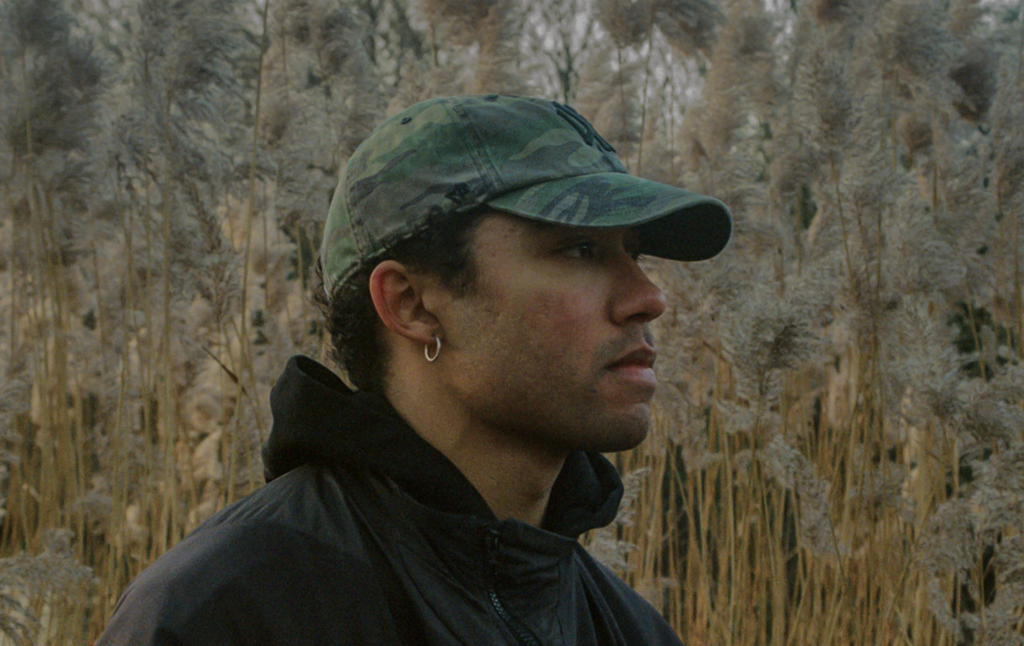
Nexcyia is an American sound artist and experimental ambient musician based between London and Paris. Working with found sound, Nexcyia weaves together harsh sound design and swooping soundscapes into works that bridge many moods, emotions and places through noise, granular synthesis, textures and rhythms. Nexcyia has released Origin EP on Takuroku, Crawl EP on Alien Jams and has performed in various venues/festivals such as the ICA, Barbican Centre, Cafe OTO, Chisenhale Gallery, Primavera Sound, IKLECTIK and more. His debut album “Endless Path of Memory” is out in March via Pensaments Sònics.
How have you been? What have you been up to? Where are you currently?
I’ve overall been good. I’m currently in Barcelona with my partner, we just came back from the beach. A lot of things are happening right now, my debut album is coming out on March 8th which I’m psyched about. Some really cool features and festivals are reaching out too. My sister is gonna have a baby soon, so I’m gonna be an uncle in April.
Your debut album, “Endless Path of Memory”, is out soon via Pensaments Sònics. Can you talk about how this album came together, what ideas and practices you wanted to channel?
A lot of these tracks were recorded around 2019 at my uncle’s place in Los Angeles and my family house outside Paris. I’ve always been interested in exploring otherness, themes of identity and mental health. It’s something I feel super attached to because of my own lived experience as a minority living between France and the UK.
Thematically – your releases tend to revolve around human emotions, like anxiety, vulnerability, loneliness…Can you talk about the emotional aspect of your music-making?
When diving into these themes, it’s really key to make a personal connection with them. I like to bring my own experiences and emotions into the music-making process, looking for samples and sounds that really capture the mood I’m going for. I play around with the dynamic range and tempo to match the emotion I’m aiming at – slower tempos and softer dynamics can create this reflective or melancholic mood that I love.
You work with field recordings, granular synthesis, but also archived audio and sampling, which brings the topic of memory to life. How do you create your sound and mediate into tracks, albums?
I integrate my granular synthesis primarily by layering and manipulating a diverse array of sounds. Following this, I extensively EQ various frequencies, resample, and further manipulate them to yield distinct textures. Additionally, I often disable the grid in Ableton Live during production, leveraging the fluidity it provides. This can be toggled on/off effortlessly by pressing CTRL – 4 (Win) / CMD – 4 (Mac).
How important is sound design for you?
Sound design is an essential component of music production. Its impact extends beyond just creating pleasant sounds; it shapes the artistic vision, emotional resonance, and overall sonic identity of a track. Whether it’s enhancing a soundscape, creating unique textures, or building immersive atmospheres, sound design is a fundamental tool for me! I could be EQing a pad for an hour just to get it to sound right and I’ll do this for all the layers to ensure the right texture.
In your piece, “Texas 2005”, you work with archival footage from your family archive shot between Texas and LA, which is part of your “Afrosurrealist” series of video works. Besides the obvious personal aspect of this series, there is also the socioeconomic and racial inequality aspect to it. Can you talk about these works? Are you planning any more of these videos/ films?
This exploration into Afrossurealism began with the creation of “Texas 2005” (2021), a venture that naturally unfolded into a captivating series of videos such as “Origin” and “Human (un_fold).”
These videos share a common thread by using the same footage, skillfully capturing the essence of a multiverse. The allure of this archival footage extends beyond its familial connection; it lies in the unique manner in which it has been recorded. Each frame tells a story of the struggles within black households, conveying a poignant vulnerability while also exuding an enduring sense of community and resilience. The recordings, originating in 2005 from my Aunt’s home in Bryan, Texas, vividly showcase broken-down houses in overlooked black neighbourhoods that seem frozen in time, untouched by progress over the last century.
These visuals not only unravel the stark racial divides and enduring disparities but also offer a glimpse into the profound multi-generational trauma embedded in the fabric of these communities. The footage poignantly captures the unyielding attitudes and expectations of privilege that, like a deeply rooted legacy, prove challenging to shift.
Rooted in Afrosurrealism, my artistic direction is not solely fixated on the future; rather, it intimately explores the lived experiences of black individuals. Embracing elements of the mystical that are inherent in the culture, this aesthetic becomes a powerful vehicle for storytelling. What captivates me about this aesthetic is its intrinsic motivation to rewrite the inherited narrative of black inferiority. It aligns with a broader movement where artists and writers passionately work towards the remaking of the African-American narrative, a process that empowers individuals to own and redefine their identities.
Is your moniker – Nexcyia – in any way related to the legendary Afrofuturist Detroit project Drexciya?
I get this a lot! My name unintentionally sounds like Drexciya, but has nothing to do with them. Nexcyia was kind of a made up name and doesn’t necessarily hold a specific meaning or theme although I am interested in creating an Afrosurrealist narrative or Afrosonic fiction. The people that do inspire me are the people that are in the current ambient scene like mu tate, nueen, Racine, Purelink, Pontiac Streator, Ben Bondy, Special Guest DJ…etc